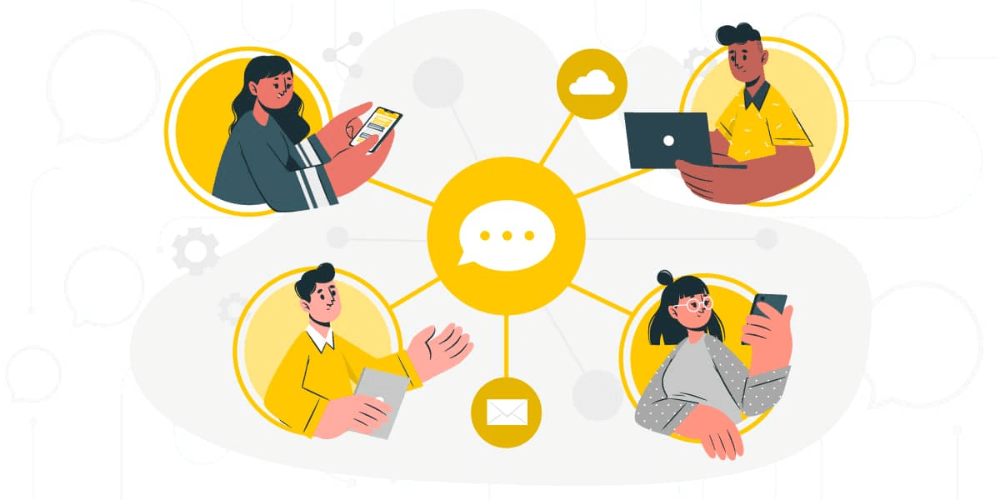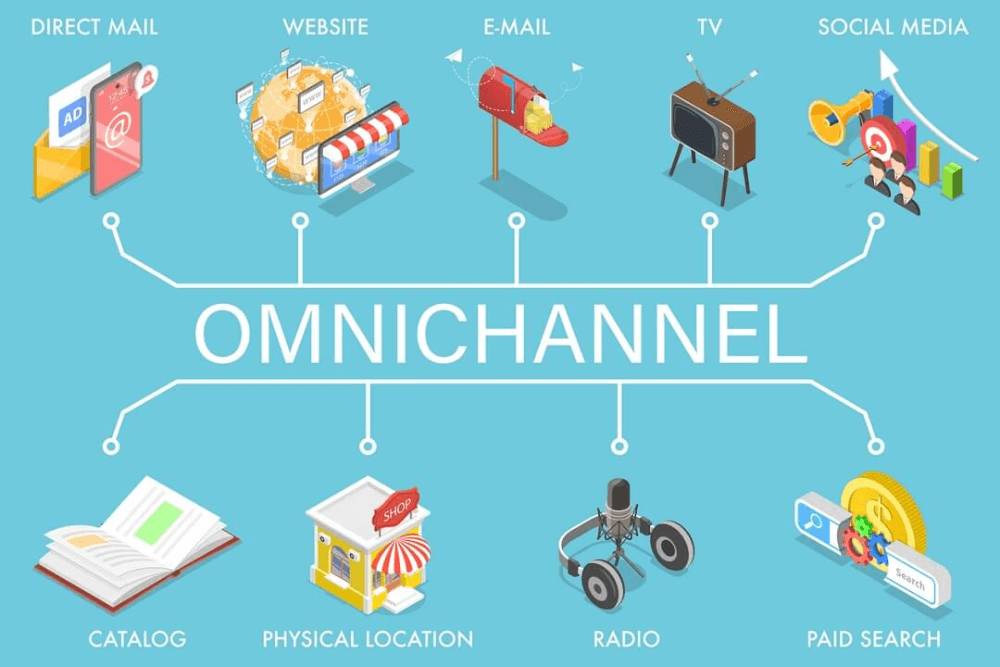📑Table of Contents:
- Why Omni-Channel Marketing Matters
- The Role of SMS in Omni-Channel Campaigns
- SMS and Email: The Power Duo
- SMS and Push Notifications: Reinforcing Engagement
- SMS and Social Media: Extending Reach
- SMS and In-App Messaging: Keeping the Flow
- Best Practices for Omni-Channel SMS Integration
- Real-World Example: Retail Campaign
- The Future of Omni-Channel SMS
- Final Thoughts

Marketing no longer happens in silos. Customers interact with brands across multiple touchpoints, from emails and text messages to social media and mobile apps. To keep pace, businesses must deliver a seamless experience that connects all of these channels. That’s where omni-channel marketing comes in.
SMS plays a central role in this strategy. With near-instant open rates and high engagement, text messaging bridges gaps left by other channels. But its power multiplies when integrated with email, push notifications, in-app messaging, and social platforms. Together, they create a unified journey that keeps customers engaged and loyal.
Why Omni-Channel Marketing Matters
Today’s customer expects a smooth experience. They may see a product on Instagram, click an email reminder, and then receive a text with a discount code. Each step feels connected. Without that consistency, brands risk losing attention.
Omni-channel marketing ensures that every interaction builds on the last. Messages stay consistent, timing aligns, and customers feel recognized across touchpoints. SMS enhances this flow because of its immediacy. Unlike email or social posts that can sit unnoticed, text messages demand attention in real time.
The Role of SMS in Omni-Channel Campaigns
SMS is not meant to replace other channels. Instead, it strengthens them. Think of it as the glue that holds an omni-channel campaign together.
For example, email may carry long-form content, while SMS delivers a quick reminder. Social media may showcase lifestyle branding, but a text gives the direct link to buy. Push notifications can spark engagement in an app, and SMS can reinforce that message outside of the app environment.
The key is balance. Too many messages feel overwhelming. But the right blend keeps customers informed without fatigue.
SMS and Email: The Power Duo
Email remains a cornerstone of digital marketing. It’s ideal for newsletters, product launches, and detailed promotions. Yet, its average open rate lags behind SMS.
When paired together, the results improve. A brand can send a detailed email about a sale, then follow up with a short SMS reminder before the promotion ends. This double touch keeps the offer top of mind.
Timing is crucial. If the email goes out in the morning, the SMS reminder in the afternoon reinforces urgency. Together, they raise engagement and conversions.
SMS and Push Notifications: Reinforcing Engagement
Push notifications work well for app engagement. They nudge users to check in, complete a purchase, or view new content. However, they only work when the app is installed and notifications are enabled.
That’s where SMS complements push. For example, if a push notification doesn’t get opened, an SMS can deliver the same message. This dual-channel approach ensures that time-sensitive alerts—like flash sales or booking confirmations—reach the user.
Brands in travel and e-commerce use this effectively. A push notification may confirm a hotel booking in the app, while an SMS provides the same confirmation with a link to details. Customers feel reassured, and the brand reduces friction.
SMS and Social Media: Extending Reach
Social media excels at awareness and engagement. Platforms like Instagram, TikTok, and Facebook help brands build communities. But these channels are noisy. Posts can easily get buried.
SMS provides the direct connection social media lacks. For example, a brand can run a social campaign inviting followers to sign up for SMS alerts. Once opted in, the customer receives exclusive promotions or early access codes.
Conversely, SMS can drive traffic back to social platforms. A message saying, “See our new launch video on Instagram!” connects text subscribers with social followers. This cross-pollination keeps the brand visible across spaces.
SMS and In-App Messaging: Keeping the Flow
In-app messaging is powerful for guiding user behavior. It nudges customers while they’re actively engaging. For instance, an app may highlight a new feature or encourage users to complete onboarding steps.
But once the customer leaves the app, communication stops. That’s where SMS bridges the gap. For example, if a user abandons their cart in the app, an SMS can follow up with a reminder. This keeps engagement alive outside of app usage.
In-app and SMS together create continuity. Customers feel like the brand is always present, without being pushy.
Best Practices for Omni-Channel SMS Integration
To maximize results, businesses must approach SMS integration strategically. Here are key practices:
- Unify brand voice. Keep tone and style consistent across channels. A playful voice on Instagram should match the tone in SMS.
- Segment your audience. Not every customer needs every message. Use data to personalize outreach.
- Coordinate timing. Space messages to avoid fatigue. For example, send an email in the morning and an SMS follow-up later in the day.
- Automate where possible. Marketing automation tools connect SMS with email, push, and social scheduling.
- Test and measure. Track which channel combinations drive the highest engagement and conversions.
Real-World Example: Retail Campaign
Consider a retail brand launching a seasonal sale. Here’s how omni-channel SMS integration could look:
- Email introduces the sale with product highlights.
- Social posts build excitement with visuals and hashtags.
- SMS sends a 10% off promo code valid for 24 hours.
- Push notifications remind app users of items left in their carts.
- In-app messages guide customers to explore sale categories.
Each channel plays a role. SMS acts as the urgency driver, ensuring customers don’t miss the offer.
The Future of Omni-Channel SMS
As customer expectations rise, omni-channel strategies will grow even more important. Artificial intelligence will personalize the timing and content of messages across platforms. For example, AI may learn that a customer responds best to SMS in the evening and emails on weekends.
Rich Communication Services (RCS) will also expand SMS capabilities. Features like clickable buttons, carousels, and multimedia will blend SMS closer to app and email experiences. This will create even stronger cross-channel cohesion.
The future belongs to brands that see SMS not as a standalone tool but as a vital piece of a larger strategy.

Final Thoughts
Omni-channel marketing is about creating seamless experiences. Customers don’t separate their interactions by channel, and neither should brands. SMS adds speed, urgency, and directness to this mix. When combined with email, push notifications, social media, and in-app messaging, it creates a powerful ecosystem that drives engagement and loyalty.
The best results come from careful planning. Unified voices, smart timing, and data-driven personalization transform disconnected messages into cohesive journeys. By integrating SMS into broader strategies, businesses can cut through noise and connect with customers at the right time, on the right channel.
